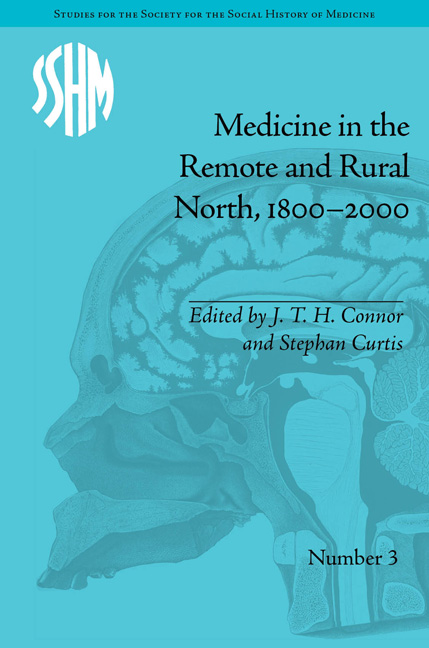Book contents
- Frontmatter
- CONTENTS
- Acknowledgements
- List of Contributors
- List of Figures and Tables
- Introduction: Cores/Peripheries – Rural/Remote: Medicine, Health-Care Delivery and the North
- Part I Remote Medicine and the State
- Part II Doctors and Doctoring in Remote Areas
- Part III Women, Health Care and the Practice of Medicine
- 9 The West Greenlandic Midwives 1820–1920: Mediators between their Compatriots and Danish Doctors
- 10 Delivering Health Care in Rural New Brunswick: Outpost Nursing in the Twentieth Century
- 11 Mother's Medicine: Women, Home and Health in the Peace River Region of British Columbia, Canada, 1920–40
- 12 Call of the Wild: Public Health Nursing in Post-War Lapland
- Notes
- Index
12 - Call of the Wild: Public Health Nursing in Post-War Lapland
from Part III - Women, Health Care and the Practice of Medicine
- Frontmatter
- CONTENTS
- Acknowledgements
- List of Contributors
- List of Figures and Tables
- Introduction: Cores/Peripheries – Rural/Remote: Medicine, Health-Care Delivery and the North
- Part I Remote Medicine and the State
- Part II Doctors and Doctoring in Remote Areas
- Part III Women, Health Care and the Practice of Medicine
- 9 The West Greenlandic Midwives 1820–1920: Mediators between their Compatriots and Danish Doctors
- 10 Delivering Health Care in Rural New Brunswick: Outpost Nursing in the Twentieth Century
- 11 Mother's Medicine: Women, Home and Health in the Peace River Region of British Columbia, Canada, 1920–40
- 12 Call of the Wild: Public Health Nursing in Post-War Lapland
- Notes
- Index
Summary
In Finland, the public health care system started to develop gradually just before the Second World War. The basic units for arranging health care were municipalities that concentrated mainly on the medical treatment of communicable diseases, especially tuberculosis. Tuberculosis was prevalent and maternal and child mortality was high, especially among the poor social classes.
After the war, municipalities started to build up the public health care system by contracting general practitioners, midwives and public health nurses and by building maternity and childcare centres. The midwives and public nurses were salaried, but the general practitioner's income came primarily from payments by patients. For the physicians, working in the remote, poor or sparsely populated areas meant lower income than in other parts of the country, and this led to a constant lack of physicians in the northern parts of Finland, especially in the Province of Lapland. Because of this the public health nurses here had to work more alone and more independently than their colleagues in more urban municipalities.
Although the activity for public health and welfare had wide-ranging support in Finnish society since the late 1920s, rural health-care services commonly suffered from a shortage of trained personnel. In Finland, this problem was accentuated in the eastern and northern provinces, which included the most sparsely populated and the poorest regions of the country. The differences in availability of the health services remained strikingly large until the late 1960s.
- Type
- Chapter
- Information
- Medicine in the Remote and Rural North, 1800–2000 , pp. 215 - 236Publisher: Pickering & ChattoFirst published in: 2014



